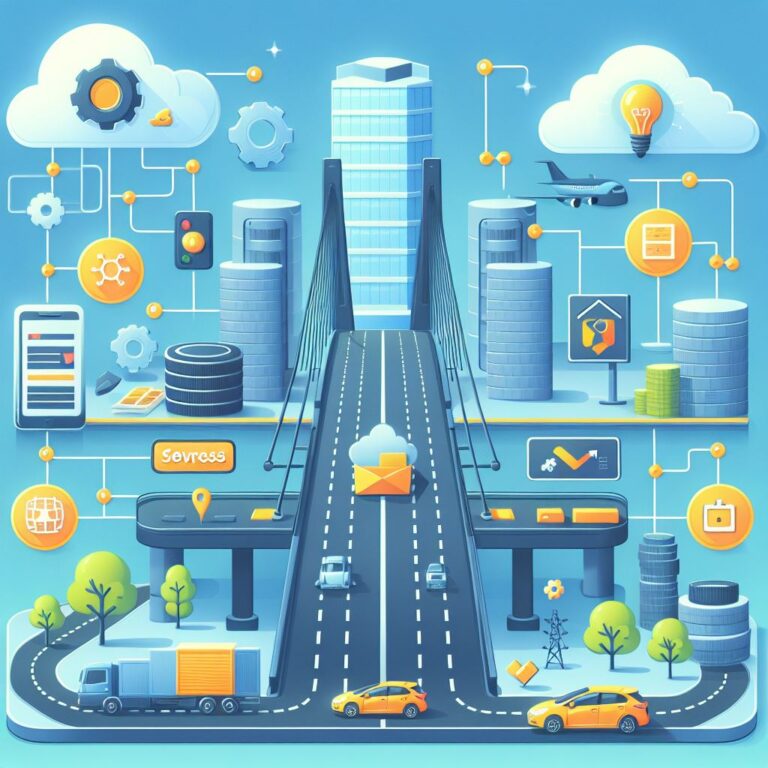Advantages of Serverless Architecture
Serverless architecture offers many benefits that can significantly benefit businesses in a variety of ways.
An important advantage is its scalability.
With serverless computing, resources are dynamically allocated based on demand, allowing applications to automatically scale up or down in response to changes in workload.
This scalability ensures that businesses can handle traffic spikes without having to worry about provisioning additional servers or managing infrastructure.
Another advantage of serverless architecture is its cost-effectiveness.
With the traditional server-based model, businesses often have to pay for resources even when not in use.
However, with serverless computing, businesses only pay for the resources they consume, resulting in savings.
Additionally, serverless platforms often offer pay-as-you-go pricing models, allowing businesses to optimize spending and allocate their resources more effectively.
Additionally, serverless architecture promotes faster time to market.
By delegating infrastructure management to cloud providers, developers can focus more on writing code and delivering features, rather than worrying about management tasks and server maintenance.
This streamlined development process allows companies to quickly iterate and deploy new features, gaining a competitive advantage in the market.
Disadvantages of Serverless Architecture
While serverless architecture offers many advantages, it also has disadvantages that businesses should take into account.
A major disadvantage is the risk of supplier dependence.
Since serverless platforms are proprietary and offered by cloud providers, switching from one provider to another can be difficult.
Businesses can find themselves locked into a particular supplier’s ecosystem, limiting their flexibility and potentially increasing their dependence on a single supplier.
Another disadvantage of serverless architecture is the potential for increased complexity in managing distributed systems.
With serverless computing, applications are divided into smaller, independent functions, which can lead to more fragmented and complex architectures.
Managing and monitoring these distributed components can require specialized tools and expertise, adding to a business’s operating costs.
Additionally, serverless architectures can cause performance and latency issues, especially for applications that are computationally demanding or latency-sensitive.
Because serverless platforms rely on shared infrastructure and virtualized resources, applications can have varying performance depending on factors such as network latency and resource conflicts.
Enterprises should carefully evaluate their application requirements and performance expectations before adopting a serverless approach.
Considerations for Implementing Serverless Solutions
When considering implementing serverless solutions, businesses should consider several factors to ensure a successful implementation.
An important consideration is understanding the specific requirements and characteristics of the application.
While serverless architecture can deliver benefits such as scalability and cost-effectiveness, not all applications are suitable for a serverless model.
Enterprises should evaluate factors such as the application’s workload model, performance requirements, and integration dependencies to determine if serverless is the right solution.
Another important consideration is choosing the right cloud provider and serverless platform.
Different cloud providers offer serverless services, each with its own set of features, limitations, and pricing models.
Businesses should carefully evaluate the capabilities and limitations of each platform to choose the platform that best meets their requirements and goals.
Additionally, businesses should consider factors such as vendor limitations, geographic availability, and compliance requirements when choosing a cloud provider.
Security is another important factor to consider when implementing serverless solutions.
While serverless platforms handle many aspects of security, such as infrastructure management and patching, businesses are still responsible for the security of their applications and data.
This includes implementing appropriate authentication and authorization mechanisms, encrypting sensitive data, and monitoring for security threats and vulnerabilities.
Companies must also ensure compliance with relevant regulations and standards, such as GDPR or HIPAA, when processing sensitive data in serverless environments.
Finally, enterprises should consider the operational aspects of managing serverless applications.
Although serverless platforms eliminate much of the work of infrastructure management, businesses still need to monitor application performance, manage dependencies, and troubleshoot problems effectively.
Implementing appropriate monitoring and logging mechanisms is essential to gain visibility into application behavior and quickly detect and diagnose problems.
Additionally, companies must establish clear deployment and testing processes to ensure the reliability and stability of serverless applications in production environments.
Real-world Use Cases of Serverless Architecture
Serverless architecture has been widely adopted across various industries due to its flexibility, scalability, and cost-effectiveness.
The real-world use case of serverless architecture is web and mobile application development.
Many companies leverage serverless platforms like AWS Lambda or Azure Functions to build and deploy web APIs, backend services, and event-driven applications.
By leaving infrastructure management to the cloud provider, developers can focus on writing code and delivering features without worrying about provisioning, scaling, or server maintenance.
Another attractive use case for serverless architecture is in the area of data processing and analytics.
Organizations can leverage serverless computing services like AWS Glue or Google Cloud Dataflow to process large volumes of data in batch or real-time mode.
For example, businesses can use serverless capabilities to ingest, transform, and analyze data from a variety of sources, such as IoT devices, logs, or social media feeds.
By dynamically scaling compute resources based on workload needs, serverless platforms enable organizations to efficiently and cost-effectively manage data processing tasks without The need to manage infrastructure.
Additionally, serverless architecture is increasingly being adopted to build and deploy machine learning applications and AI models.
Data scientists and developers can leverage serverless computing environments to train, deploy, and serve machine learning models at scale.
For example, businesses can use serverless capabilities to pre-process data, train models, and provide real-time predictions or insights.
By leveraging the auto-scaling capabilities of serverless platforms and pay-as-you-go pricing models, organizations can reduce infrastructure costs and accelerate time-to-market for their machine-learning initiatives.
Useful Outlinks for Understanding Serverless Architecture
- AWS Lambda Documentation: Learn more about AWS Lambda
- Google Cloud Functions Documentation: Explore Google Cloud Functions
- Azure Functions Documentation: Discover Azure Functions
- Serverless Framework: Get started with the Serverless Framework
- Use Case Examples: Real-world examples of serverless applications





























